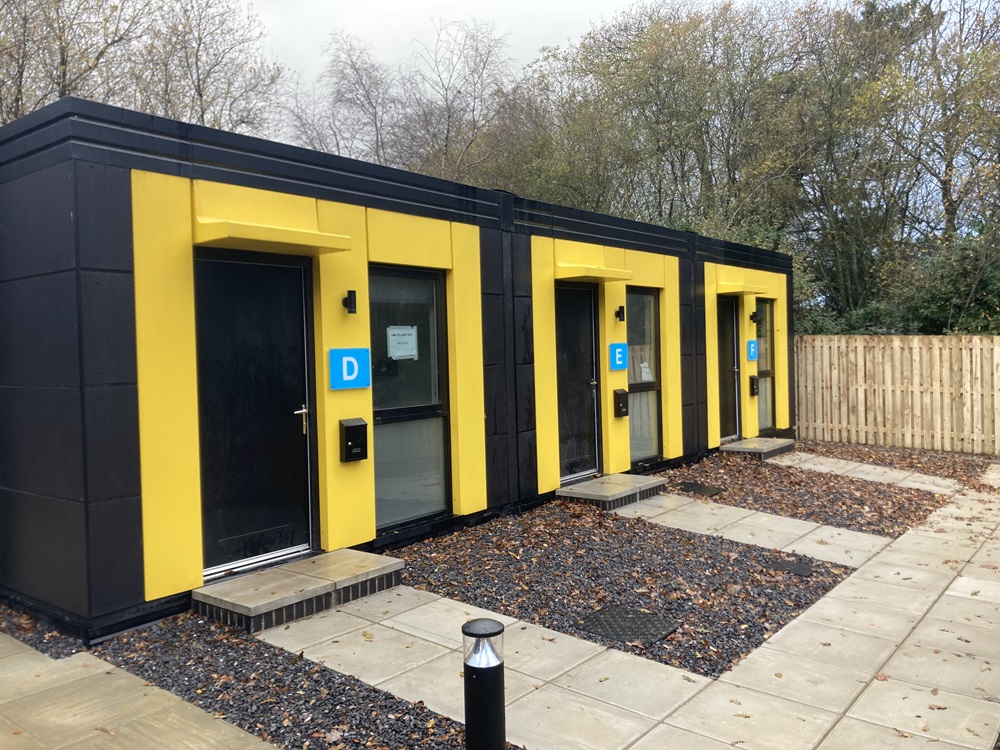
Living in a Modular Home: A Personal Experience Insight
My journey of living in a modular home has been a transformative experience. Before delving into this lifestyle, I had my reservations. However, after taking the plunge, I can confidently say that the benefits far outweigh any initial concerns. This article aims to shed light on this unique lifestyle choice and provide a personal perspective on what it truly means to live in a modular home.

What is a Modular Home?
A modular home is a dwelling that is built indoors in a factory setting. Unlike traditional homes, these homes are constructed in sections, or modules, that are then transported to the site and assembled. According to Wikipedia, this method of construction is known for its efficiency and cost-effectiveness.
The Journey Begins: Choosing a Modular Home
Deciding to live in a modular home was not an overnight decision. It involved extensive research and discussions with various manufacturers. The allure of quick construction and customization options were significant factors in my decision-making process.
Design and Customization Possibilities
One of the most exciting aspects of living in a modular home is the vast array of design and customization options available. Unlike traditional homes, modular homes allow for a great deal of personalization, ensuring that the space truly reflects your personal style.
Working with Architects and Designers
Collaborating with architects and designers was a crucial part of the process. Their expertise helped in translating my vision into reality, ensuring that every aspect of the home was tailored to my needs.
Choosing the Right Features
From energy-efficient windows to state-of-the-art kitchens, the features and amenities in a modular home are limitless. I focused on sustainable and eco-friendly options to minimize my carbon footprint.
The Construction Phase
The construction phase was impressively swift. Watching the modules being assembled on-site was a fascinating experience. The precision and speed of the process were remarkable, showcasing the efficiency of modular construction.
Factory-Built Precision
Modular homes benefit from the precision of factory-built components. This ensures that each module is crafted to exact specifications, resulting in a high-quality finished product.
Settling In: The Transition to Modular Living
Once the construction was complete, the transition to modular living began. The process of moving in was seamless, thanks to the home’s well-thought-out design and efficient layout.
Adapting to New Spaces
Adjusting to the new space required some initial adaptation. However, the flexibility of the modular design made it easy to rearrange and repurpose spaces as needed.
Feeling at Home
Creating a warm and inviting atmosphere was a priority. With the help of interior design tips, I was able to transform the modular house into a cozy home.
Maintenance and Upkeep
One of the standout benefits of living in a modular home is the reduced maintenance required. The quality of construction materials and techniques used in modular homes contribute to their durability and longevity.
Efficient Upkeep
Regular maintenance tasks are straightforward and manageable, allowing for more time to enjoy the living space rather than constantly tending to repairs.
Cost-Effectiveness of Modular Homes
From a financial perspective, modular homes offer significant benefits. The initial investment is often lower than that of traditional homes, and the long-term savings on utilities and maintenance are substantial.
Energy Efficiency
Modular homes are designed with energy efficiency in mind. This translates to lower utility bills and a reduced environmental impact, aligning with my goals of sustainable living.
The Community Aspect
Living in a modular home community has its unique advantages. The sense of camaraderie and shared values among residents adds an enriching dimension to the lifestyle.
Building Connections
The opportunity to interact with fellow modular home enthusiasts has been rewarding. Sharing experiences and tips with neighbors has fostered a supportive and welcoming community.
Potential Challenges
While the experience has been overwhelmingly positive, there are challenges to consider. Zoning regulations and financing options can be hurdles for potential modular homeowners.
Navigating Regulations
Understanding local zoning laws and regulations is crucial before embarking on the modular home journey. Fortunately, resources are available to guide homeowners through this process.
The Future of Modular Living
The future of modular homes is bright, with advancements in technology and design leading to even more innovative and sustainable housing options. For insights into future trends, check out future of modular housing.
Conclusion
In conclusion, living in a modular home has been a fulfilling and rewarding experience. The blend of modern design, cost-effectiveness, and community makes it an attractive option for anyone considering a new home. My personal journey has shown that with the right approach and mindset, modular living can offer a unique and enjoyable lifestyle.

FAQ Section
What is the average cost of a modular home?
The average cost can vary widely depending on the location, design, and features chosen. Generally, modular homes are more cost-effective than traditional homes.
How long does it take to build a modular home?
The construction timeline for modular homes is significantly shorter, typically ranging from a few weeks to a few months, depending on the complexity of the design.
Are modular homes environmentally friendly?
Yes, modular homes are designed with sustainability in mind. They often use eco-friendly materials and incorporate energy-efficient features.
This article contains affiliate links. We may earn a commission at no extra cost to you.